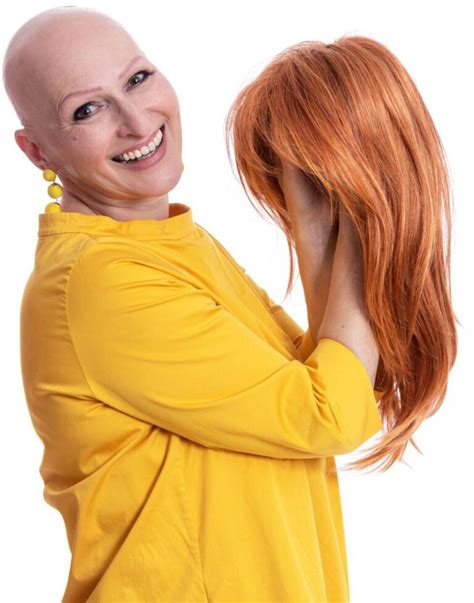Introduction

Cancer, a formidable adversary, often leaves patients grappling with physical and emotional challenges. Among these, hair loss stands out as a particularly distressing side effect of many cancer treatments. Wigs, however, offer an invaluable tool, restoring patients’ sense of identity, self-esteem, and well-being.
Statistics on Cancer-Related Hair Loss
According to the American Cancer Society, approximately 65% of patients undergoing chemotherapy experience hair loss. This figure emphasizes the prevalence of this issue, highlighting the urgent need for supportive measures.
The Importance of Wigs for Cancer Patients
Wigs serve multiple purposes for cancer patients:
- Psychological Support: Wigs restore a sense of normalcy and control, mitigating the emotional toll of hair loss. They empower patients to maintain their appearance, enhancing their self-image and confidence.
- Physical Benefits: Wigs protect the scalp from sun exposure, reducing the risk of sunburn and skin cancer. They also provide warmth, especially during cold weather treatment.
- Social Well-Being: Wigs enable patients to participate fully in social activities, reducing isolation and improving their quality of life.
Types of Wigs for Cancer Patients
The market offers a wide range of wigs tailored to the needs of cancer patients:
- Human Hair Wigs: Crafted from real hair, these wigs provide a natural and comfortable fit. They can be styled and colored to match the patient’s original hair.
- Synthetic Hair Wigs: Made from artificial fibers, synthetic wigs are more affordable and easier to maintain. They come in a variety of styles and colors.
- Lace Front Wigs: Lace front wigs have a thin lace panel that creates a seamless hairline, providing a natural-looking appearance.
Tips and Tricks for Choosing the Right Wig
- Consider Your Face Shape: Oval faces can wear most wigs, while round faces may prefer longer styles with side bangs. Square faces benefit from layered wigs with soft waves.
- Determine Your Style: Select a wig that complements your natural hair texture and style. Experiment with different lengths and colors to find the most flattering option.
- Get Fitted by a Professional: A wig specialist can help you find the perfect fit and provide styling tips tailored to your needs.
Common Mistakes to Avoid
- Purchasing a Cheap Wig: Avoid wigs made from low-quality materials, as they may be uncomfortable and difficult to maintain.
- Wearing the Wig Too Tight: Ensure the wig fits comfortably without causing discomfort or headaches.
- Ignoring Wig Care: Follow the manufacturer’s instructions for washing and styling your wig to prolong its lifespan.
FAQs
- How long will my wig last? The lifespan of a wig depends on the type of hair, frequency of use, and care routines. Human hair wigs typically last longer than synthetic wigs.
- Can I wear my wig all the time? It’s not recommended to wear a wig for more than 12 hours per day to prevent scalp irritation.
- How often should I wash my wig? Wash your wig every 4-6 weeks or as directed by the manufacturer.
- Can I swim with my wig on? Avoid swimming with a wig, as chlorine and saltwater can damage the hair fibers.
- Is it okay to sleep with my wig on? It’s generally not recommended to sleep with a wig on, as this can cause friction and tangles.
- Can I color my wig? Only human hair wigs can be colored safely by a professional hair stylist.
Conclusion
Wigs provide an invaluable lifeline for cancer patients navigating the challenges of hair loss. They restore confidence, enhance well-being, and symbolize a renewed sense of hope and empowerment. By embracing this transformative tool, patients can reclaim their identity and embrace a positive outlook on their cancer journey.
